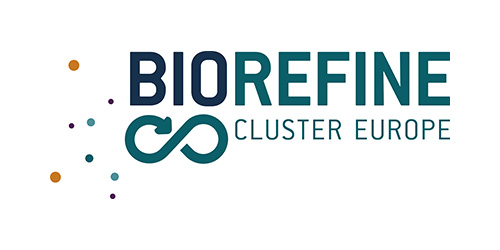The 2nd Nutri2Cycle National Task Force event has been held in Denmark
13/08/2021
The Nutri2Cycle National Task Force (NDF) in Denmark has been set up and coordinated by the Danish partner University of Copenhagen (UCPH), in collaboration with the agricultural organization SEGES (the Danish National Agricultural Advisory and R&D center). The NTF includes professionals with particular interest and responsibilities in fertilisers, fertilisation strategies and related technologies (agro-industry, fertiliser companies, local and national agricultural advisors, researchers, technology innovation centers, NGOs and administrators from the public agencies). This network meets annually for a workshop and serves as an ideal forum for the Nutri2Cycle NTF, and to strengthen this further, the network also serves as the NTF for the related EU-H2020 project LEX4BIO.
In 2020 the covid-19 situation, unfortunately, forced us to cancel the meeting. However, in 2021 the 2nd NTF meeting was held on 1st July at the UCPH experimental farm, where we could communicate Nutri2Cycle outcomes and results of the project so far. In total 31 people participated in the event, with a program including both a field excursion, talks and discussion. The field excursion in the morning visited several sites: field trials with N-effect of several bio-based fertilisers (LEX4BIO project), which take place simultaneously in 5 places in Europe; field trials with measurements of the greenhouse gas nitrous oxide and carbon sequestration in field trials with catch crops and biobased fertilisers. Finally, the long-term CRUCIAL field trial about recycling society’s organic residues – sewage sludge, household compost, human urine and various livestock manures, focusing on soil carbon build-up, contaminants and potential risks.
The meeting program in the afternoon contained talks by Lars Stoumann Jensen and subsequent discussion about i) the new EU Fertilizer Regulation, which enters into force from 2022 – What is it and which impacts will it have on the fertilizer market and farmers uptake? and ii) introduction to the activities in EU-H2020 projects Nutri2Cycle, as well as LEX4BIO and FertiCycle.
The participants were generally very interested in the topics addressed at the meeting, and asked lots of questions both during the field trial excursion and the subsequent meeting with talks and discussion. During the morning field trip, many were quite surprised to see how effective several of the commercially available biobased fertilisers were, producing apparent crop biomass more or less similar to the corresponding mineral N reference treatment. They were also inspired by the soil quality difference visually evident in the long-term CRUCIAL field trial having received sewage sludge, household compost, human urine and various livestock manures for more than 20 years. However, they were surprised to learn that to date we have not been able to identify any major detrimental effects to neither the soil microbiome, nutrient turnover, crop quality or heavy metal accumulation, rather the contrary. This is the case even in the accelerated treatments, where +200 years of normal legal dose of the mentioned organic waste has been applied until now.
During the afternoon session with talks and discussion, Lars Stoumann Jensen introduced the new EU Fertilizer Regulation, and the impacts the new regulation can be expected to have on the European fertilizer market. Lars Stoumann Jensen also gave an introduction to the Nutri2Cycle activities, particularly focusing on UCPH work with environmental assessment of technologies for enhanced nutrient recovery and use efficiency. Especially the slurry acidification study, comparing impacts in three different geographic and regulatory context (DK, NL, ES) caused a lively debate, also in relation to recent changes in Danish regulations for slurry acidification. The technology os commonly applied in Denmark for mitigating ammonia volatilization from animal slurry field application, where it may substitute mandatory slurry injection; this means 15-25% of all slurry is acidified. Up until now regulations have been based on a required pH target (5.5-6) to which the slurry should be acidified; however, this has proven difficult to document and verify; even if automatic logging takes place, it is too expensive to have authorized annual verification of pH sensors on the machinery. Instead, from 2021 the regulation has changed to a requirement for certain amount of sulfuric acid addition for each slurry type; this will simplify verification (invoices from acid suppliers). However, several participants claimed that the required amounts were excessive compared to current practice and would mean that much less slurry will be acidified in the future, leading to higher overall ammonia volatilization. The discussion illustrated the same point as the current UCPH Nutri2Cycle LCA study, that the environmental effect of a technology implementation depends not only on the climatic and agronomic context, but also on the regulatory setting.
All in all, the Nutri2Cycle NTF event 2021 was very successful and gave the participants good insight into the issues and challenges of closing CNP loops with recovery, recycling and efficient use of nutrients in waste streams.

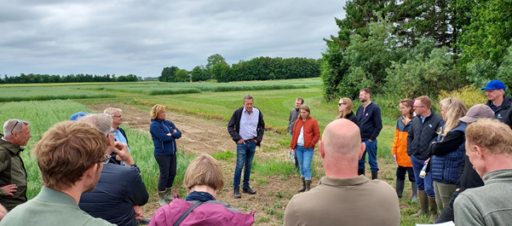
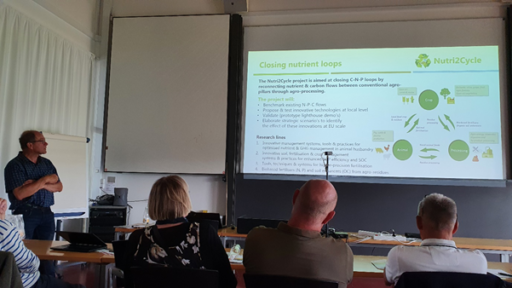
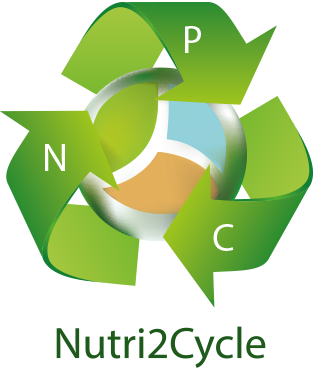

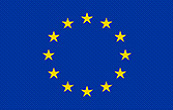 This project has received funding from the European Union’s Horizon 2020
This project has received funding from the European Union’s Horizon 2020